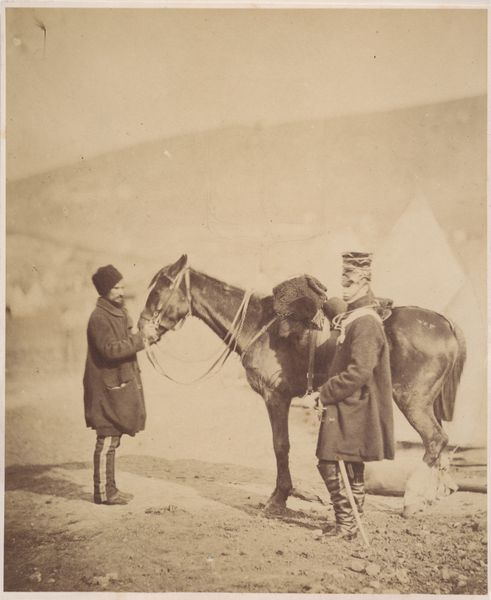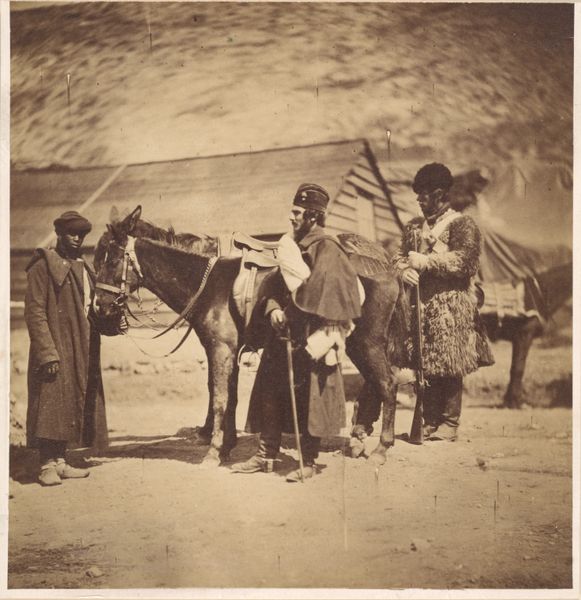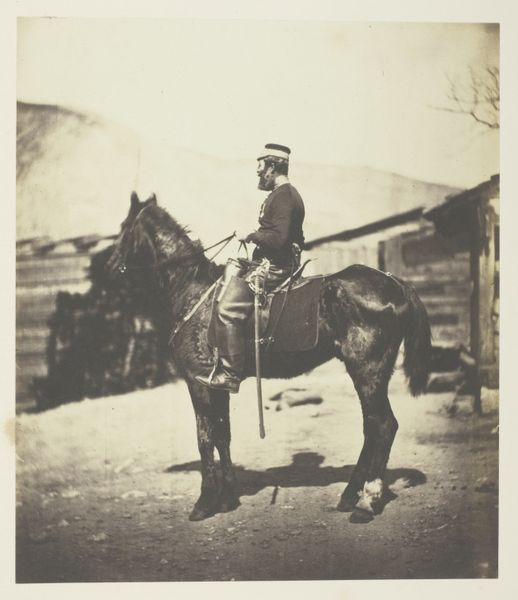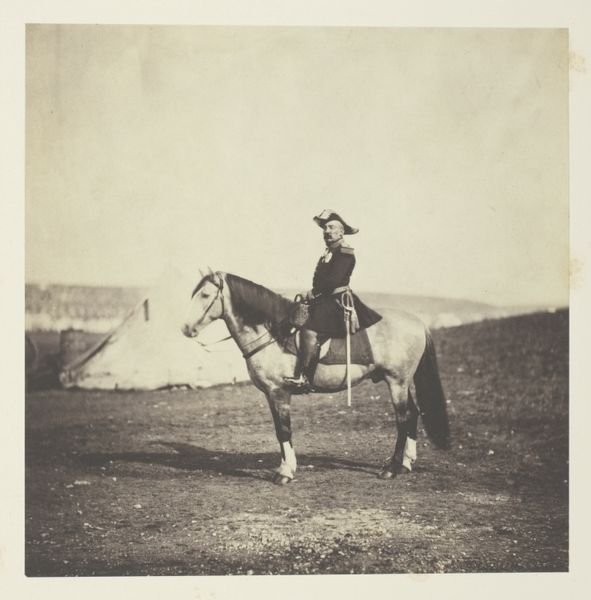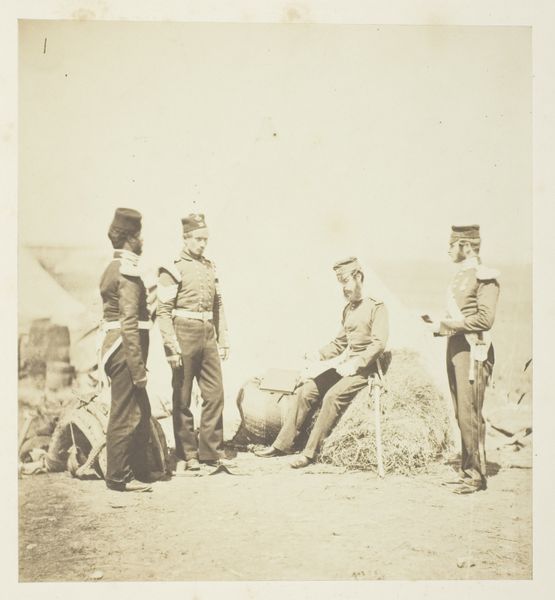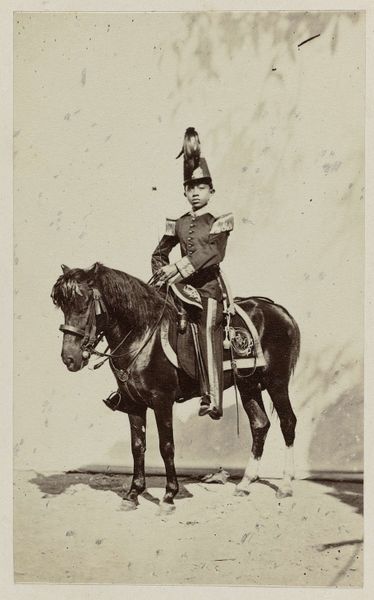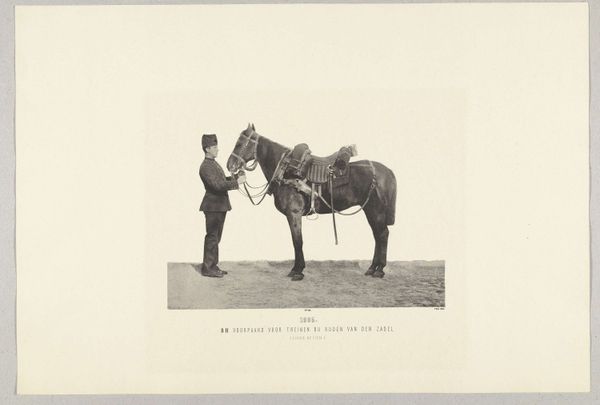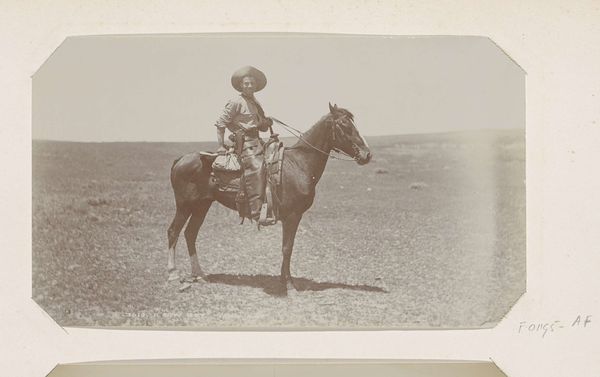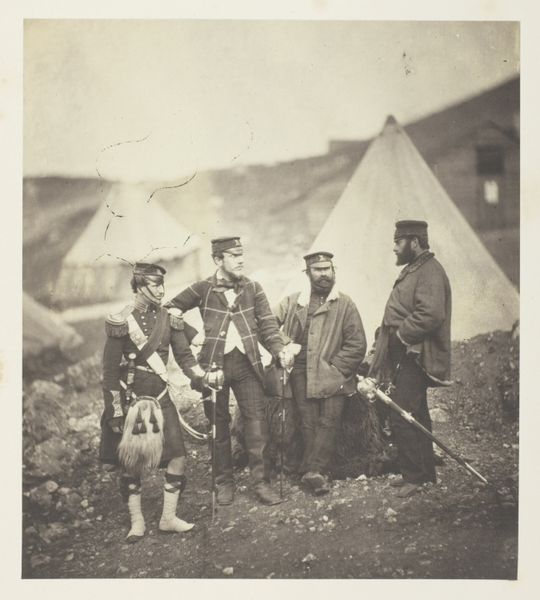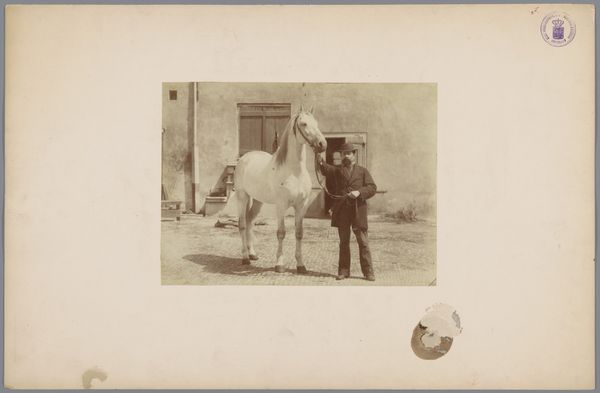
Dimensions: Image: 15.9 x 15.8 cm (6 1/4 x 6 1/4 in.) Mount: 16 x 15.9 cm (6 5/16 x 6 1/4 in.)
Copyright: Public Domain
Editor: Here we have Roger Fenton’s "Henry Duberly and Mrs. Duberly" from 1855, a gelatin silver print that immediately strikes me as an odd combination of formality and… emptiness. What story do you think it tells? Curator: It's a compelling image when you consider its context. Fenton created this in Crimea, during the war. The Duberlys were very present during that period, figures of notoriety. The very act of photographing them elevates them, doesn't it? To be immortalized, made visible back in Britain, served to both romanticize and sanitize the war effort for the public. What do you notice about the setting? Editor: It seems staged somehow. It's almost like a theatre backdrop. There is a barren and kind of flat landscape with them in the middle. Curator: Precisely. The sparse landscape does serve a function. The setting deemphasizes the harsh realities of war. It reinforces a specific narrative, almost of heroic officers, and in this case, a heroic couple enduring hardship "abroad." The framing is as important as what is in it, the Duberlys and their station in the social order, that is. Consider the choices the artist made when staging the photo. Where are the people facing? What effect does that give the image? Editor: They are not looking directly at us. It's interesting how they are removed from us, not confronting the viewer. They present a version of themselves for the public's gaze, a deliberate construction. It does speak of the social and institutional forces at play. It seems that the presentation of oneself is an intricate exercise of balancing one’s character and duty to the public’s expectations. Curator: Exactly! It brings the power of early photography into stark relief, manipulating narratives, shaping perceptions… essentially participating in the theatre of war back home. So, thinking about its role in the war propaganda efforts, has your perception of this photo changed? Editor: Absolutely. It’s less about the individuals and more about the system that produced this image, and the consumption and dissemination of idealized narratives through the then newly invented photographic technology.
Comments
No comments
Be the first to comment and join the conversation on the ultimate creative platform.
